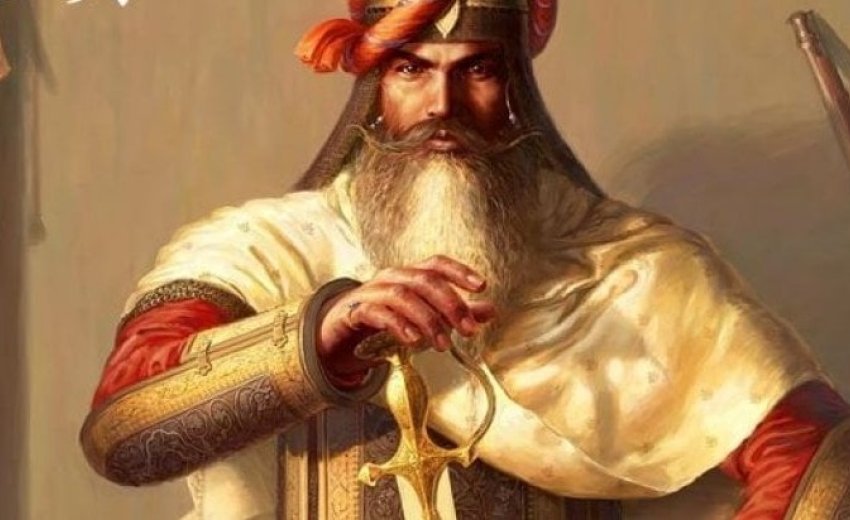The US decision to withdraw troops from Afghanistan has led to many reports referring to the country as a "graveyard of empires". Afghanistan has a history of being difficult to govern, as seen in the past with the US and USSR both having to withdraw their forces after previously gaining control in the region.
But there was once a Sikh commander named Hari Singh Nalwa who was able to tame the turbulent forces in Afghanistan and earned the reputation of being the "most feared Sikh warrior".
Who was Hari Singh Nalwa?
Hari Singh Nalwa was a well-respected leader in Maharaja Ranjit Singh’s army who served as the Governor of Kashmir, Hazara, and Peshawar. He gained fame for his victories against the Afghans and his ability to control various regions along the Afghanistan boundary. Nalwa also played a crucial role in preventing the Afghans from entering Punjab through the Khyber Pass, which was the primary route for foreign invaders to enter India for centuries.
According to former Guru Nanak Dev University vice-chancellor Dr S P Singh, Nalwa was so feared by the Afghans that mothers in Afghanistan used his name to scare their unruly children.A common refrain among mothers would be: ‘If you don’t stop crying, Haria Ragle (Hari Singh Nalwa) will turn up’.
He added that Nalwa took control of many regions along the Afghanistan border and the Khyber Pass, preventing the Afghans from making inroads into the northwest frontier.
To build a secure empire and protect against repeated incursions by the Afghans, Maharaja Ranjit Singh formed two armies. One of the armies included soldiers from France, Germany, Italy, Russia, and Greece, along with modern weaponry. The other army was entrusted to Nalwa, who had already defeated thousands of Hazars, a tribe from Afghanistan, with a smaller force.
In recognition of Nalwa's bravery and achievements, the Indian government issued a stamp in his honour in 2013.
Why did the Afghans fear Nalwa?
According to historian Dr Satish K Kapoor, Nalwa, a famous Sikh warrior, won many battles that resulted in the loss of Afghan territories. When he was just 16 years old, Nalwa defeated Afghan ruler Kutab-ud-din Khan in the battle of Kasur in 1807. Later, in 1813, he and other commanders won against Azim Khan and his brother Dost Mohammad Khan in the battle of Attock, marking the first major victory of Sikhs over Durrani Pathans. Nalwa's army also won the battle of Peshawar in 1818 and took control of Jamrud, a fort at the entrance of Afghanistan through the Khyber Pass in 1837.
Dr Kapoor pointed out that the Afghans were defeated in battles fought in Multan, Hazara, Manekera, and Kashmir as well. These victories expanded the Sikh empire and created a great fear of Nalwa among the Afghans. Consequently, Nalwa was stationed in Peshawar to monitor the Afghan-Punjab border. Dr Kapoor is the former registrar of DAV University and also served as the director of Hindu Kanya College of Kapurthala.
What happened in Nalwa’s final battle?
The Battle of Jamrud marked the end of Nalwa's military career. During this battle, Dost Muhammad Khan and his five sons fought against the Sikh army, which was significantly outnumbered with only 600 men and limited resources. Nalwa, who was in Peshawar at the time, rushed to Jamrud to help the besieged Sikh army.
When the Afghan army learned of Nalwa's arrival, they were surprised and began to retreat. However, Nalwa sustained a severe injury during the battle and ultimately died. Before he passed away, he instructed his army not to disclose the news of his death until reinforcements from Lahore arrived to support them.
Prior to the battle, Nalwa had been invited to attend the wedding of Maharaja Ranjit Singh's grandson Nau Nihal Singh in Lahore. He declined the invitation out of fear that Dost Muhammad Khan would seize the opportunity to attack Jamrud while he was away. Khan had also been invited to the wedding but chose not to attend.
Historians believe that if Maharaja Ranjit Singh and Nalwa had not taken control of Peshawar and the northwest frontier, these areas may have become part of Afghanistan. This could have led to further Afghan invasions into Punjab and Delhi.
The reason he was called Nalwa despite being born into an Uppal family
Hari Singh was born into an Uppal family in Gujranwala (now in Pakistan) in 1791. Sadly, when he was just seven years old, his father Gurdial Singh passed away, leaving him to be raised by his maternal uncle.
At a young age, Hari Singh became known for his bravery when he reportedly killed a tiger during a hunting trip. This act earned him the nickname 'Nalwa' and 'Bagh Maar' (killer of a tiger). According to a popular story, the tiger attacked him suddenly, and he had no time to draw his sword. In a split-second decision, he held the tiger's jaw, pushed the animal back, and drew out his sword, killing the animal. This tale impressed Maharaja Ranjit Singh, who upon hearing it, exclaimed, "Wah Mere Raja Nal Wah!"
Interestingly, this story also has connections to the Mahabharata, where Nala, the son of Veerasena and king of the Kushwah kingdom, was also renowned for his bravery.
Hari Singh Nalwa’s story is an untold tale of bravery and military strategy that should not be forgotten.This most feared Sikh warrior has indeed left a legacy that still inspires many.
*Based on an article by Anju Agnihotri Chaba, published in Indian Express on 2nd September 2021

